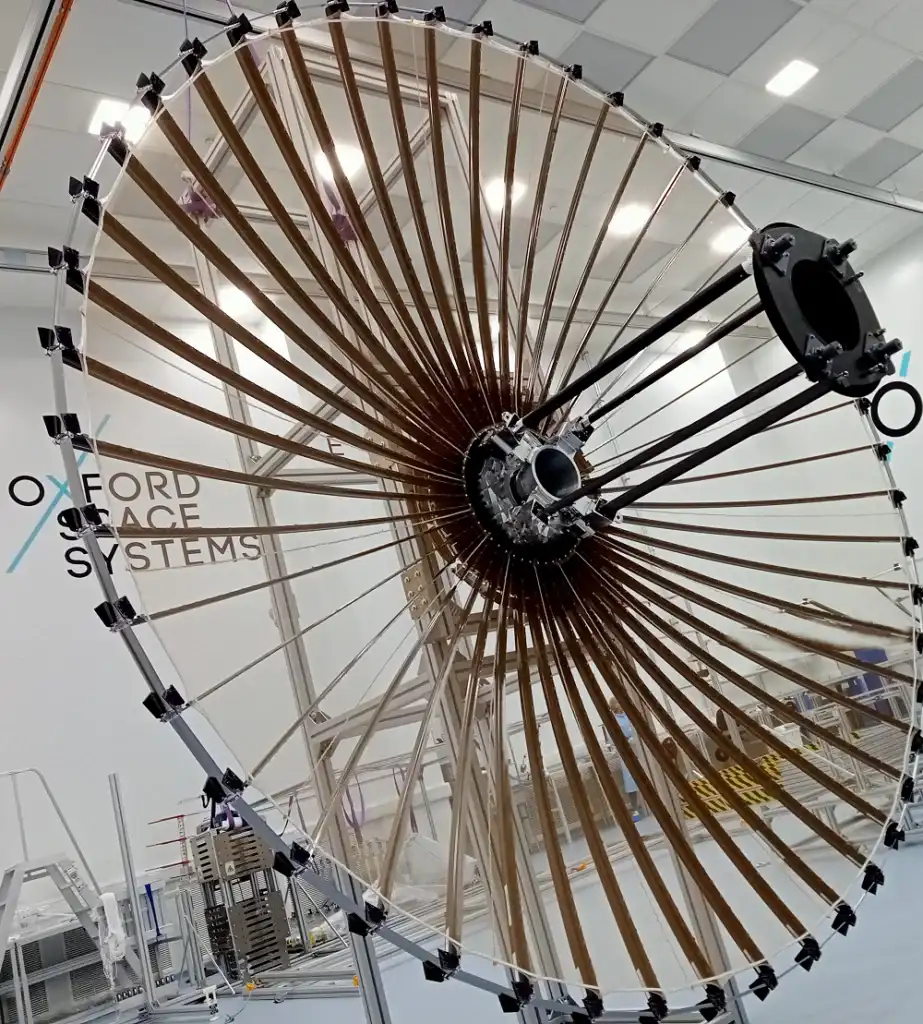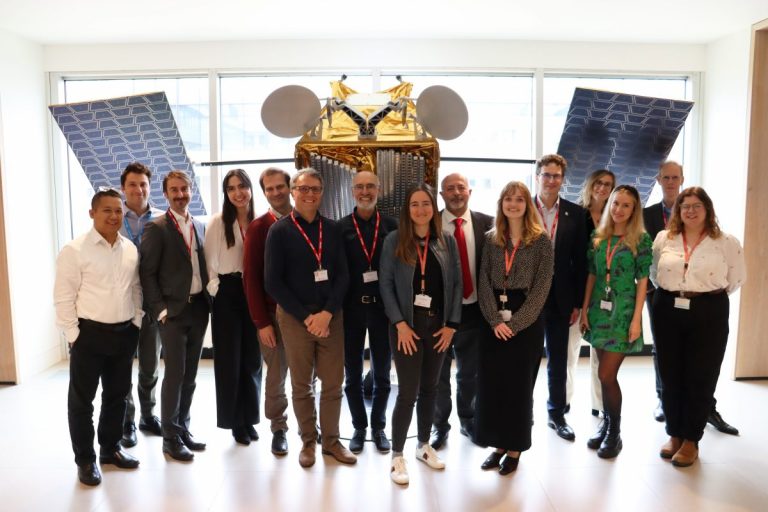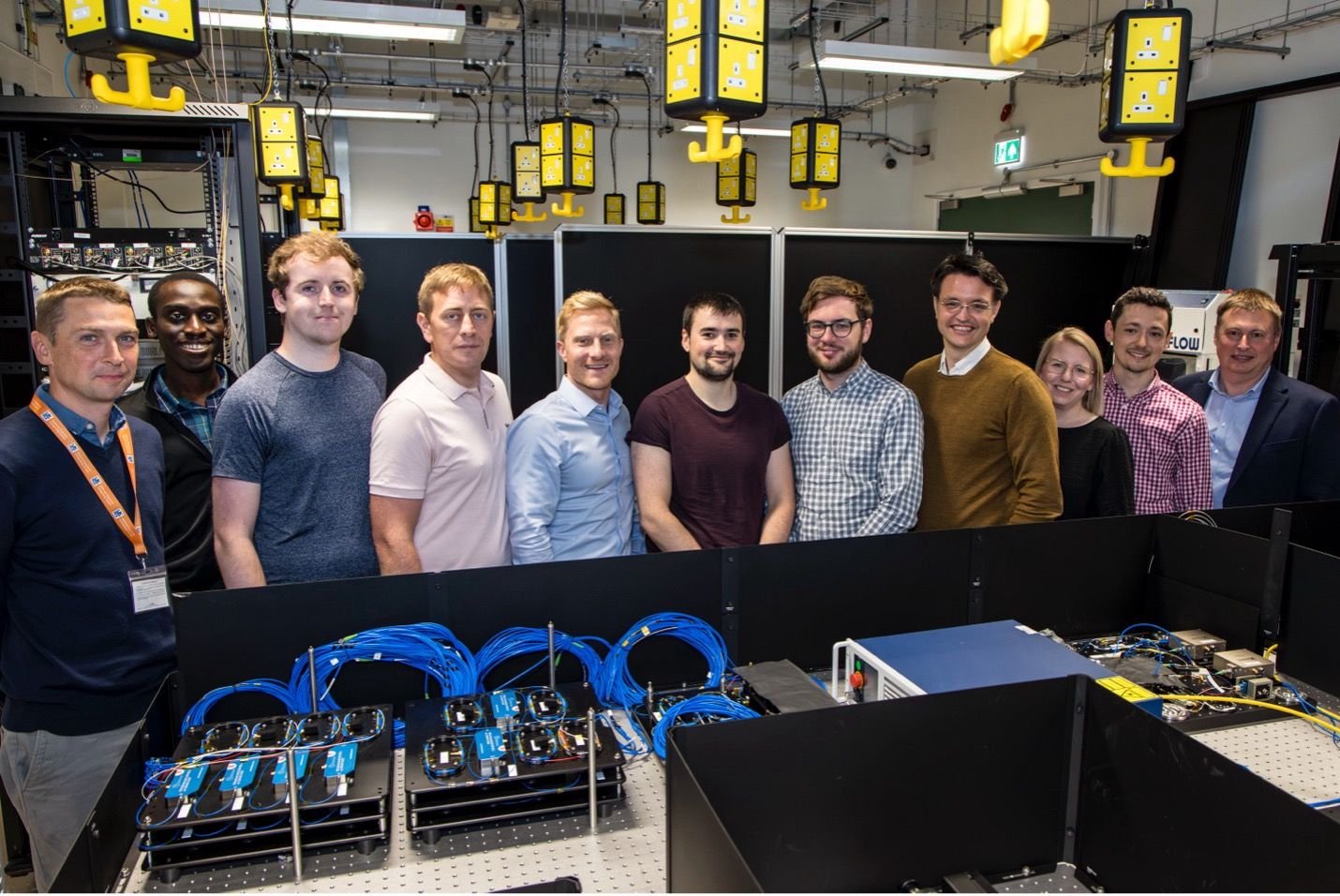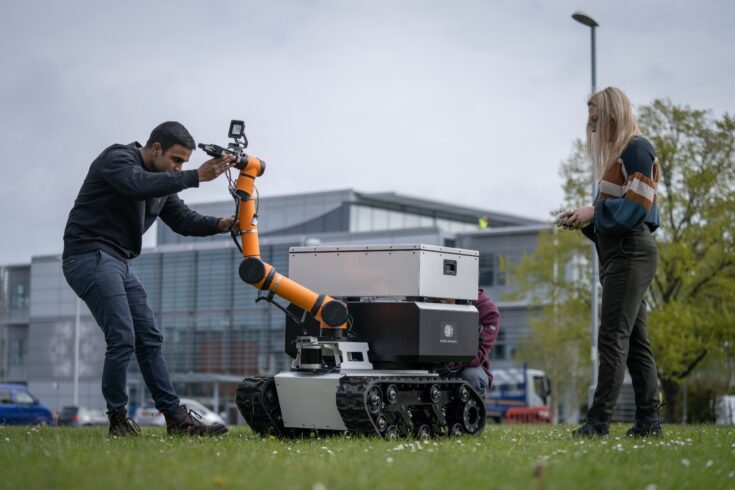
UK space companies’ partnership develops advanced deployable SAR Antenna Payload
Oxford Space Systems (OSS) based at Harwell Science and Innovation Campus and Surrey Satellite Technology Ltd (SSTL) have completed the build of an innovative deployable Synthetic Aperture Radar (SAR) antenna payload for the next generation of high-performance low-cost Earth Observation radar small satellite missions. The new SAR payload, which comprises of a highly stowage-efficient deployable antenna from OSS and a high bandwidth radar instrument and RF system from SSTL, has been exclusively designed in the UK, supported by a grant from the UK Space Agency’s National Space Technology Programme.
OSS has developed an innovative Cassegrain reflector antenna with a metal mesh surface known as the “Wrapped Rib” antenna, a 3m diameter parabolic reflector which stows into a small volume, making the architecture compatible with ~150kg spacecraft. Operating at high frequency, the Wrapped Rib antenna is the ideal solution for low-cost, high resolution SAR missions using SSTL’s CarbSAR platform. The project successfully demonstrated deployment of the main reflector ribs and secondary reflector mast with a subsequent RF test of the system’s performance.
Sean Sutcliffe, Chief Executive of Oxford Space Systems said: “We are delighted with the outcome of this collaboration with SSTL and UKSA. The highly innovative OSS Wrapped Rib Antenna, combined with SSTL’s digital and RF electronics provides a compact SAR payload for smallsat missions and we are already seeing strong international customer interest for this product”.
Andrew Haslehurst, Chief Technology Officer of SSTL, said: “SSTL pioneered the development of small satellites from the early 80’s combining initiative technologies with a different approach enabling smallsat missions. Embedding the SAR electronics directly into our core avionics simplifies the architecture, combined with the impressive stowage volume of the Wrapped Rib has enabled SSTL to develop a very capable CarbSAR product providing high resolution X-band SAR imaging capabilities day, night and whatever the weather”.
Surveillance, change detection and “big data” analytics applications are driving interest in spaceborne SAR data, to support day/night and all-weather imaging at a rate faster than can be achieved with any individual satellite. This drives demand for much smaller radar satellites that can be launched within a limited launch volume in groups, however it is still desirable to
retain a large antenna for better quality imagery. Having a large, scalable, stowable and lightweight, reflector antenna provides a number of benefits in designing small radar satellites for particular applications. A reflector antenna can also significantly simplify the radar electronics, making it ideal for implementing radar on much smaller spacecraft such as SSTL’s CarbSAR platform.
The funding grant from the UK Space Agency’s National Space Technology Programme has enabled OSS and SSTL to mature the technology in readiness for a potential demonstration mission next year.
Dr Paul Bate, Chief Executive of the UK Space Agency, said:
“The UK has been a pioneer in the small satellite market and is at the forefront of Earth observation technology and antenna design and development for this class of spacecraft. We’re backing companies like Oxford Space Systems and SSTL to deliver new space capabilities that will help us tackle challenges, including disaster monitoring, urban planning and transport management.
“Our support for this exciting partnership shows how we are working to catalyse investment into the thriving space sector and provide valuable services to a global community.”
The innovative antenna developed by Oxford Space Systems has a 3m diameter deployable reflector but there are very few facilities available that can accommodate such a large antenna for RF testing measurement. Oxford Space Systems is working in collaboration with QuadSAT to use a drone-based measurement system to overcome the challenges of testing such a large reflector diameter. Drones offer unparalleled flexibility and portability for outdoor antenna measurements, which is especially convenient to assess the performance of large aperture systems. Earlier in April 2022, this drone measurement approach was used for the first time on the 3m EM version of the Wrapped Rib antenna.
Carlo Rizzo, CCO, QuadSAT, commented: “With this project, Oxford Space Systems is making high-performance, low-cost earth observation attainable. We wanted to ensure our UAS system could remove the complexity normally associated with testing large space deployable antennas which are subject to gravitational effects. As well as being able to test and verify the antenna is performing as expected, we have proven the system’s ability to test large antennas, either before deployment or on an ongoing basis.”


